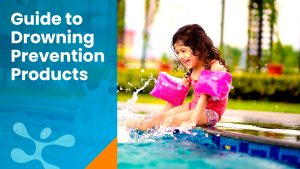Have a toddler and a pool … then it’s time to brush up on your baby gate pool fence basics.
Fun around the family pool should be child’s play but pool safety isn’t. Whether you are a parent or grandparent, drowning prevention is the leading priority if you own a pool. Yes, adult supervision ranks top on the list of avoiding unfortunate accidents. But, you need a baby gate pool fence as your primary line of defense. With this type of child pool safety fence installed, you have that extra layer of security year-round, 24/7.
The importance of a baby gate pool fence is not to be taken for granted. From common misconceptions to critically overlooked details – let’s take a look at what vital facts you may be missing.

So, how do you hone in on a baby gate pool fence that meets all the safety requirements?
At Pool Guard USA, we’ve been making pool safe for kids for over 20 years. Let us help you secure your pool.
Please fill out the form below with your information. Your local dealer will be notified about your inquiry.
Please fill out the form below with your information. Your local dealer will be notified about your inquiry.